You’re at your workplace putting in the hours, and it seems to be just an ordinary day, like many others before it…
Suddenly, you hear sirens in the distance and the power goes out. You take your phone out and try to call your loved ones, but the line is busy.
You get the feeling that something is very wrong and deep down inside, you know that a disaster is coming your way. Although you are many miles away from your loved ones, you have to get home. Your only hope of reaching them is your get home bag, resting against your desk.
Our modern lives seem to be spinning out of control most of the time, and unfortunately, we spend surprisingly little time at home. You run errands, you make appointments, and you spend most of your time at work. If you are a preparedness like-minded individual, you have to take his into account when building your emergency preparedness plan. You can’t count on luck and hope when it hits the fan.
What is a get home bag and why you need on
As the name implies, a get home bag is a survival kit designed with the main purpose of getting you home if a disaster occurs while you are away from your loved ones. By design, it is much more simple than a bug out bag and more practical to be carried around back and forth to work each day.
Your get home bag can take a variety of forms depending on your preferences. However, the main point is to keep it as light and as simple as possible. A small pack may be the ideal solution in this case.
Some people will argue that building a get home bag may be nothing more than wasting precious resources, and you don’t actually need to use one. The folks saying such things are those that work close to home and for them, having such a bag becomes somehow useless.
For the rest of us, having a get home bag may be our only insurance to get back home safely. When you plan yours, don’t think about the end of the world or something like that. Such a bag can be useful even during during a car failure, a regional blackout or a powerful storm.
A get home bag drastically increases your chances of getting home unharmed, and putting one together is not a difficult task. In fact, you can do it rather quickly, in one afternoon. I’ve listed below the recommended supplies for your get home bag. You can build upon this list, but remember that a get home bag should be custom made based on the lifestyle of the owner. Factors such as survival knowledge, the career and environment will often dictate what goes into your bag.
Must-have items in your get home bag
1. A gallon of water
You should have at least one gallon of water in your bag and pick a metal container or canteen to store it. Such a container will give you the option to boil the water for cooking or other purposes if necessary. A metal container is durable in extreme conditions, and you can find many uses for it.
Besides water, I recommend getting a practical mini water filter. This is an excellent addition to your bag, and it can cover your water needs when you run out of it. It’s a perfect plan B.
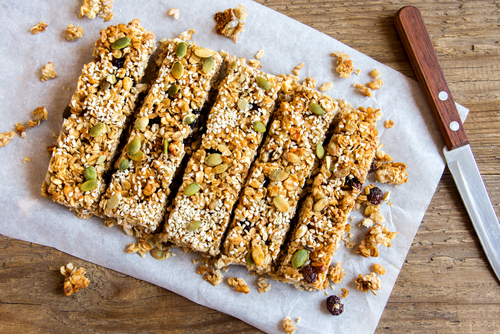 2. Energy bars
2. Energy bars
Certain people will put some MREs in their get home bags or other elaborate meals. Don’t do that since you need to keep things simple. Get six energy bars, and you should cover all your food needs. These high-calorie bars are easy to carry and are a good meal substitute.
When you’re on the go, you should have food that doesn’t require heating or cooking. Go with open and ready to eat meals. Even homemade pemmican can be a good alternative for your get home bag.
3. A tarp
Make sure you have a lightweight tarp in your bag. This versatile item can be used during various scenarios. You can improvise a temporary shelter, use it as ground cover and it can even be used as a ground to air signal. A tarp has many survival uses, and it’s a must for every survival bag.
4. A rain poncho
Chances are the weather will turn on you, and you will get wet. It’s not only a miserable and morale lowering experience, but it can also be a deadly one. Hypothermia is the number one killer in unknown environments, and you don’t have to be in the mountains to catch it.
When you get wet and you need to cover a long distance, every passing minute increases your chances of getting it, and you become vulnerable. If you an improvise a poncho from your tarp you won’t need to get a rain poncho. However, if you lack the skill to do so, I recommend getting a military rain poncho which can also be used as an improvised shelter and ditch the tarp.
5. Emergency Blanket
An emergency blanket or Mylar blanket can prove useful when you don’t have a sleeping bag. It’s cheap, lightweight and compact. It can keep you warm in cold weather and it may even save your life. Used in conjunction with your tarp or rain poncho, it can deliver maximum efficiency.
6. A pair of sturdy walking boots
If you wear formal shoes to work, you might want to add a pair of sturdy boots or hiking sneakers in your get home bag. You need comfortable footwear to travel faster and cover long distances while keeping your feet protected.
It should go without saying that you also need to pack the right type of socks since you don’t want to get blisters when traversing rough terrain. There are socks on the market designed for both cold and hot seasons so make sure you look into this matter when picking a pair or two.
7. A change of clothes
No matter what survival kit I have in reach, I’m always certain I’ve packed an extra change of clothes. This becomes mandatory for a get home bag since you will be able to change out of your working clothes into something more comfortable. Something that offers both protection and better maneuverability.
Pick the type of clothes that will help you blend in your environment and into crowds and don’t forget a hat or a cap to protect yourself from the sun or rain. Whatever you pick, I recommend vacuum sealing it so you can save space.
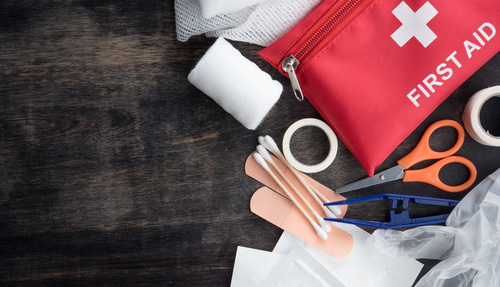 8. A first aid kit
8. A first aid kit
There are all sorts of mini first-aid kits available on the market nowadays, and you should consider getting one for your bag. This should be common sense at this point, and you need to make sure it contains the following: bandaged, gauze pads, medical tape, insect repellent, lip balm and tweezers.
It should also contain medication such as Dramamine, Aspirin, antacids, and specific medicine you depend on. If you wear contacts or glasses, make sure you include a spare pair as well.
9. Hygiene kit
Things will get dirty, and you need to stay clean. Don’t assume you will get home just in time to get a hot shower. Your hygiene kit should contain some toilet paper, soap, disinfecting wet napkins, and hand sanitizer. Some folks will even include a toothbrush and some toothpaste, but I honestly believe it’s overkill, and it will just add to the weight of the get home bag.
I suggest you also consider adding a face mask to protect you from dust, debris or sickness. Some folks will improvise a face mask from a t-shirt or a bandana, but I can tell you from experience that nothing beats the N95 facemask.
10. A sturdy multi-tool
This is an item that can come in handy during various scenarios. I don’t think there’s the need to list all the survival uses of such a tool. However, I think it’s better to stress on two things when it comes to buying a multi-tool.
The first thing is not to be cheap when picking one since you might later regret this when the multi-tool fails you. And second, make sure your tool has a solid knife, a saw blade, pliers and flat/cross point drivers at the minimum. You never know when you might need to use one of these tools. This is a valuable resource to have, and if you have the proper knowledge it can get you out of various nasty situations.
This Timeless Collection of Forgotten Wisdom Will Help You Survive!
11. Paracord
There is a lot of literature on the use of a paracord and if you are a prepper or survivalist, you should know by now how useful such item is. You can do pretty much anything you can think of using a paracord, and it’s a must-have item for your bag.
12. A map and a compass
We are used to letting our car GPS drive us around, and we memorized our daily routes to the letter. However, chances are you may find yourself in a situation where you have to find your way back home without the help of technology. In such cases, having a map or a compass can be a lifesaver.
If you don’t know your surroundings very well, and you need to find an alternative route, a map will become an invaluable item. Everyone will try to get out of the affected area, and you need to plan for detours and avoid bottlenecks.
13. A flashlight or lamp
A light source is a must-have for any survival kit. While most folks will go with a sturdy flashlight, I prefer to have a hand-cranked one. There are even LED lamps you can pick and if you decide to do so, go with a hand-free water-resistant headlamp. It’s much more practical to be used when traveling at night.
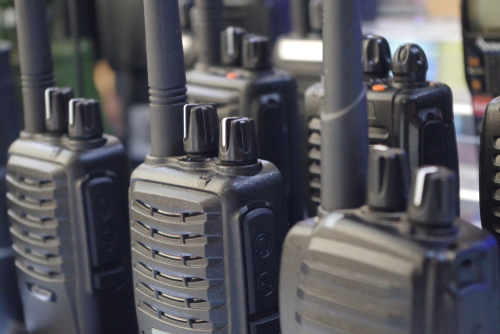 14. Emergency radio
14. Emergency radio
This item is mandatory to keep you updated and to help you stay ahead of the crowd. Once again, I recommend picking a hand-cranked one to avoid carrying batteries in your backpack. Whatever model you chose, make sure it can receive NOAA alerts. Also, if it has USB ports, it will help you charge your phone or other devices.
15. Rescue signal items
Learning to signal for help is a valuable help, but not everyone has such skills and time may not work in their favor. In those cases, a signal mirror, led flares, and even a whistle can be used for conveying messages and making your location know to the rescue teams.
In certain scenarios, you may have to let people know where you are, and you need to do so with the items at hand. Your phone may not always work, so make sure you take into account some “primitive ways” of signaling for help.
16. Self-defense items
Depending on the nature of the disaster, its aftermath may not be as devastating or as impacting compared to the unpredictable actions of the social elements. The event may cause mass panic, and as we all know, panic is the breeding ground for violence and desperate actions.
I won’t go into details about categories of self-defense items or make scenarios. However, I can tell you that your safe-defense items of choice should be practical to use, you should be able to use it under various circumstances, and it should help you avoid hand to hand combat.
Some people will go with a compact pistol with two or three extra magazines, but as I said, it’s all up to you and the skills you have in handling a firearm.
17. Cash money
No matter the disaster or the human factor you will have to deal with, cash remains a universal language. Cash doesn’t care about the power grid, and it can persuade most people into giving up willingly the goods you need.
Pack small denominations in a variety of places and never reveal all your money at once. The money will help you get out of a sticky situation, and it’s better to learn how to negotiate to avoid spending it all at once.
Concluding
A get home bag is an essential item if you spend most of your time away from home, and you need to cover a long distance to get back to your loved ones. You need to make it as light as possible, and you should never limit yourself to a small backpack, even though it can fit all your items.
Get a bigger backpack in case you need to scavenge for items if the event lasts longer than expected and if you have to make long detours. Survival becomes a gamble when you have to face the unexpected, and in most cases the event has the upper hand. Having a get home bag can even the odds, and it may help you reach the safety of your home.





























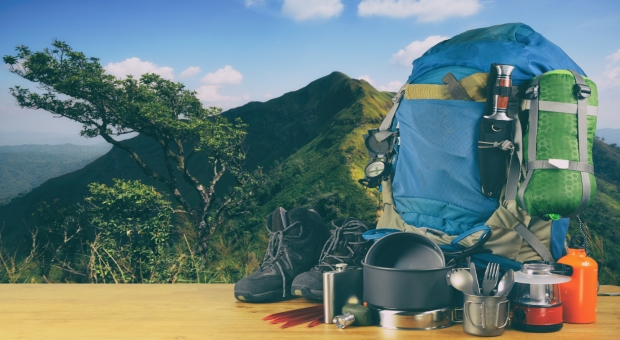
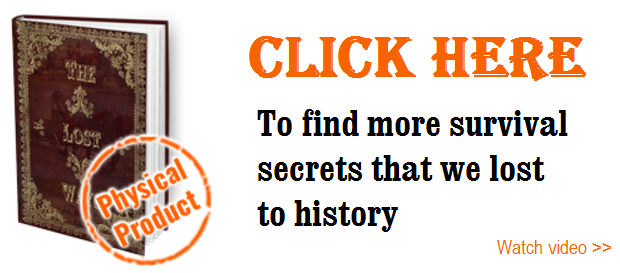

























































Include some strong garbage bags.
They can be used as a poncho or to cover your bag or carry water (+h20 purification tablets)
A flotation device for you or your bag.
Filled with plants or paper and used as a blanket.
I also include some strong medications incase of injury but still need to move.
Thanks for the input. Very useful as I am a new to all these things. What are the strong medications you mentioned?
Treat medications seriously, as a last resort !!!
It depends what you can get access to ?
Start simple and improve whenever you can.
I pack a few medications including;
Anti-constipation & anti-diarrhera incase of too many biscuits or foraging problems.
Sedatives to combat stress and ensure rest when in a safe area or caffeine/energy tablets to stay alert (get out of the danger area)
Anti muscle cramps/muscle relaxers.
Arthritis (against exposure)heat pad or creams (eg “moov” is good for general pains )
Morphine .
Extra H2O purification tablets.
Some Armed forces in WW2 were given VERY strong meds, What we would call “Drugs” for emergency evac use..
Equivalent to methanphetame or benzodiazepine..
Strictly for use as a last resort to stay alive and reach safety.
Its your survival, you must make the decision of type or dosage. .
Oh- P.S= menthol sweets and nasal stick for basic cold symptoms and to keep airway clear for oxygen absorption.
Choose the most likely types to suit yourself.
Review and revise as you gain better knowledge or access to other medications.
I dont pack these but you may wish too ;
If asthmatic then pack an extra spray or 2.
If you use glasses pack a spare or disposable soft contact lenses .
Blister cream
Basically anything you may have used or anything you can get and use safely !!
Last- Dont take my advice,RESEARCH,REVIEW,RESPECT.
Training is a must, assemble your emergency kit, take time to use the kit, there’s three parts,1 what’s in your pocket everyday you put on your pants can do 48-72hrs dress to live worst weather in mind go bag will provide comfort and life items,water, and shelter,detailed maps showing real milage and resources use them Don’t just pack them, find out what your community is doing in an emergency please ask what’s going on keep yourself and family safe away from the mob survive!
No one needs to carry 1 gallon of water and no one should; too much weight. Unless you’re in the desert. Get a water filter.
I will never understand why people always think that they need food in a get home bag, is it going to take you three days to get home, or a week. You can easily go a week without eating, much longer if you are not extreme.y active. But easily a week even when active as in walking or running. The weight you save will easily make up for not carrying the food will be useful for important items. Carry a good water filter, like a sawyer in place of a whole gallon of water, in any urban setting you can find water, use the filter to make it drinkable, same goes any rural areas that you might have to pass through.. A wrist brace sling shot, and steel shot, weights little and will be great for most self defense uses, for close range a cane
At first i carried some food but as you say you can”survive” long enough without and it takes a lot of space and weight.
I do however carry sea ration biscuits. I’m certain I will function better,move quicker and make better decisions if I’m not distracted by hunger.
I have issues with your recommendation. First, after water, food is critical. After being in Marine Cirps Force Recon, SEER graduate, and having to live off the land several times in training and on the job, food is critical in a multi-day movement under load or stress. After 24 hours of not eating your blood sugar drops and you lose significant energy and will power. Without having had significant training under those conditions most will give up or eat something stupid and put themselves at risk. I don’t mean carry a Thanksgiving dinner but reduced rations are the minimum. One meal per day Or a lot of high calorie density food like nuts and trail mix. Keeping you blood sugar intact will push you through this and keep morale up. As for your weapon choice. After you hit me with a slingshot at 40 ft, and piss me off, I’ll put a hatchet through you skull in 2 seconds while you are reloading. A light camp axe is a great tool, you can find them under 1 pound, it can cut, chop, drive nails, and is a master key fir locked doors. In Afghanistan when we started wearing tomahawks, the locals were more afraid of those than our rifles. They knew how deadly those can be. Before we left we traded those and they were highly coveted by our friendly locals.
Totally agree!!
There is a huge difference between evac and active hostile territories movements. Kuwait 91.
I never know if I should laugh or slap someone that says use a catapult or similar weak weapon.
Better to maintain stealth and evade if you have no reasonable offensive equipment.
You live longer than the crowd food and tools are what kept the pioneer alive till the next meal or the disaster is under control ever hear of the dawner expedition Best plans can go wrong when you are not prepared to live more than the moment you are in food and tools are not available to all unless them your not going to be able to survive.
I went the Gray Man route. A plain looking backpack, not something Tacticool covered in Molle. Inside (no particular order) I have a Stainless Steel Water bottle 750ml, Sawyer Water Filter, First-aid kit, Baseball hat (no logos), a few energy bars, Tea and Gatorade mix packets, Compass, BPS Kephart Knife, Sillcock key, Emergency radio, Poncho, Mylar Emergency Tent, change of clothes, bug spray, sunscreen, TP, travel toothbrush/toothpaste/floss, Fire kit.
As for self defense, a simple snub-nose .38 with extra ammo. I’m not expecting any running gun battles. I also have a walking staff wrapped in FiberFix, makes for a handy weapon..
My normal route from work to home is around 13 miles and according to GoogleMaps that is about a 4 and half hour walk. I live in Florida so the terrain is totally flat and suburban. I do cross an interstate highway but I can take routes that allow me to avoid it.